4 Layer PCB
Four-layer circuit board is a kind of Printed Circuit Board. It is made of four layers of glass fibre, which can reduce the cost of PCB.
There are also great differences between the 2-layer and 4-layer PCB. For details, please click: What's the difference between 2 layer and 4 layer PCBs?
4 layer PCB stackup include two inner layers, inner layer 1 and 2, are sandwiched between the top and bottom layers. From top to bottom, the 4-layer PCB stackup like below ,The top, i.e. the signal layer (0.0014 in. width) is followed by a prepreg layer with a thickness of 0.0091 in. and dielectric constant of 4.2. The top layer is copper material. The prepreg layer is followed by inner layer 1 (0.0014 in.), referred to as the plane. A core sublayer is part of inner layer 1, which has a width of 0.037 in. This is followed by inner layer 2, which is another plane layer made with 1 oz. copper and is 0.0014 in. thick. Another prepreg sublayer constituting two sheets that are 0.0091 in. thick forms part of inner layer 2. The final layer, the bottom layer, is also 0.0014 in. thick, and is a signal layer as well. Interconnects are soldered and placed on the top and bottom layers.
The standard 4-layer PCB stack is shown below, and GND and VCC can be switched according to the layer with more signals.
If you don't want to connect all the ground pins through the hole, there will be different stacks and wide power routing on the signal plane.
4 LAYER 0.8 MM STANDARD BUILD
4 LAYER 1.6 MM STANDARD BUILD
0.4mm, 0.6mm, 0.8mm, 1.0mm, 1.2mm, 1.6mm, 2.0mm, 2.4mm, Please contact us if your board exceeds these.
Cost of four layer PCB is higher than double sided PCB because of complexity of design and higher sensitivity. The better quality of signals, achieved by reducing distortion and propagation levels, is also a factor. Because of the higher levels of signal integrity and reduced interference levels, more manufacturers prefer four layer PCB.
4 Layer PCB Printed Circuit Board,4 Layer PCB,4 Layer PCB Board,4 Layer Printed Circuit Board JingHongYi PCB (HK) Co., Limited , https://www.pcbjhy.com
What is 4 layer PCB?
Compared with Double Sided PCB , multi-layer PCB have many advantages. They can be designed more compactly. They can greatly improve noise resistance and make layout easier.
4 layer PCB stackup and thickness


4-layer PCB has two stacking forms
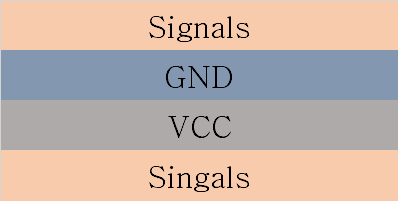
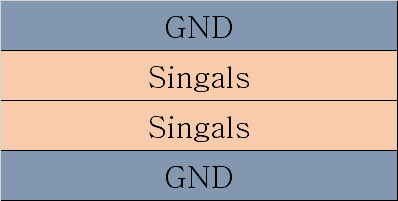
For the following reasons, this may be a better stack to use a four-layer PCB:
When the high-speed signal changes the reference plane, there should be a nearby path for its return current to move between the two reference planes. Using two horizons, you can do this by connecting two planes directly to a single channel. For grounding and power layers, the connection must be made through capacitors, which usually require two through-holes and one capacitor. This means worse signal integrity and more circuit board occupancy. On the other hand, having a power plane can reduce the voltage drop on the power rail, thereby releasing the space on the signal layer.
PCB Board Thickness
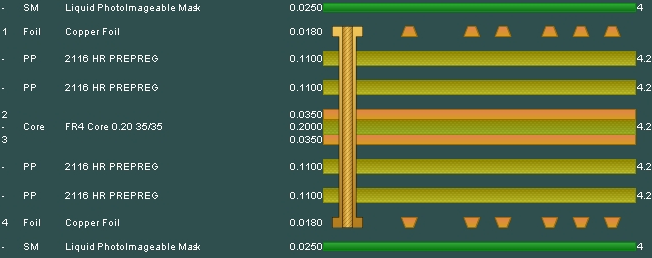
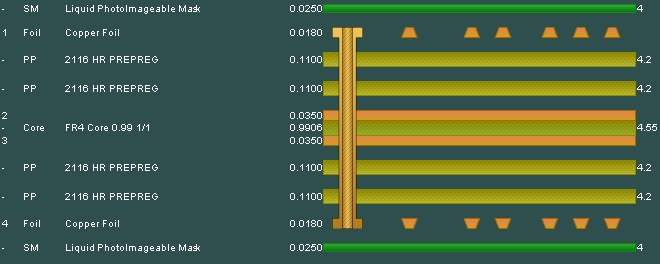
4 layer PCB Prototype
4-layer circuit board prototyping refers to the trial production of Printed Circuit Boards before mass production. It is mainly used for electronic engineers to design circuits and complete PCB Layout, then to carry out small-scale trial production process to the factory, that is, proofing PCB. The production quantity of four-ply proofing generally has no specific boundaries. Generally, engineers call it proofing before product design has not been confirmed and test has been completed.
Notices for proofing of four-layer circuit boards
The precautions for the production of four-layer PCB samples generally include two groups, one is the Engineer group, the other is the PCB Sample manufacturer.
As a group of engineers, the matters needing attention in proofing are as follows:
1. Choose proofing quantity carefully to control cost effectively.
2. Specially confirm device packaging to avoid proofing failure due to packaging errors.
3. Conduct comprehensive electrical inspection to improve the electrical performance of PCB board.
4. Make good signal integrity layout, reduce noise and improve PCB stability.
As a manufacturer of four-layer circuit boards, the precautions are as follows:
1. Check PCB files carefully to avoid data problems.
2. Conduct process approval in an all-round way and process configuration with self-manufacturer.
3. Control production quantity, reduce cost and maintain quality.
4. Communicate with customers who need samples to prevent accidents in advance.
4 layer PCB price and cost
We specialize in Quick Turn PCB services with an industry leading turnaround time as fast as 24 hours. Three low-cost options for a small number of PCB prototyping needs. At the same time, we also provided Flexible PCB , Rigid- Flex PCB , Metal Core PCB , High-TG PCB, Aluminum PCB , PCB Stencils, PCB Assembly Services and so on. Using the same high-tech equipment as our full-service PCB, it can be manufactured quickly and with virtually no limits.
4 layer PCB Manufacturing
We provide a full range of PCB functions to meet all your PCB needs. At present, we accept five PCB file formats (gerber file,.Pcb,.Pcbdoc.cam or.brd file format) for PCB manufacturing. But if you design a circuit board using Sprint-Layout software, you can send the. LAy6 file to us to manually generate the Gerber file.
JingHongyi PCB can provide you with multi-layer PCB board that meets RoHS standard. With laminated material, it can match high temperature in assembly process. It is important to remember that some lead-free assembly processes will require laminated substrates to withstand temperatures exceeding 260 degrees Celsius or 500 degrees Fahrenheit over a longer period of time. To solve this problem, we have high temperature laminates in stock, so that our customers can meet the higher temperature cycle requirements of some lead-free assembly applications.
Min. Order Quantity: 1 pcs
Material: FR-4
Finished Copper: 1oz/2oz/3oz(35μm/70μm/105μm)
Inner Layer Copper Thickness:1oz/1.5oz(35μm/50μm)
Silkscreen: White, Black, None
Surface Finishing: HASL with lead, HASL lead free, Immersion gold, Hard Gold ,OSP...
Shape: Custom Shape
100% Quality control
When making circuit boards, and after they are finished, we will test and inspect them strictly to ensure that the product reaches 100% eligibility rate. Preferential prices and higher quality have always been our constant pursuit:

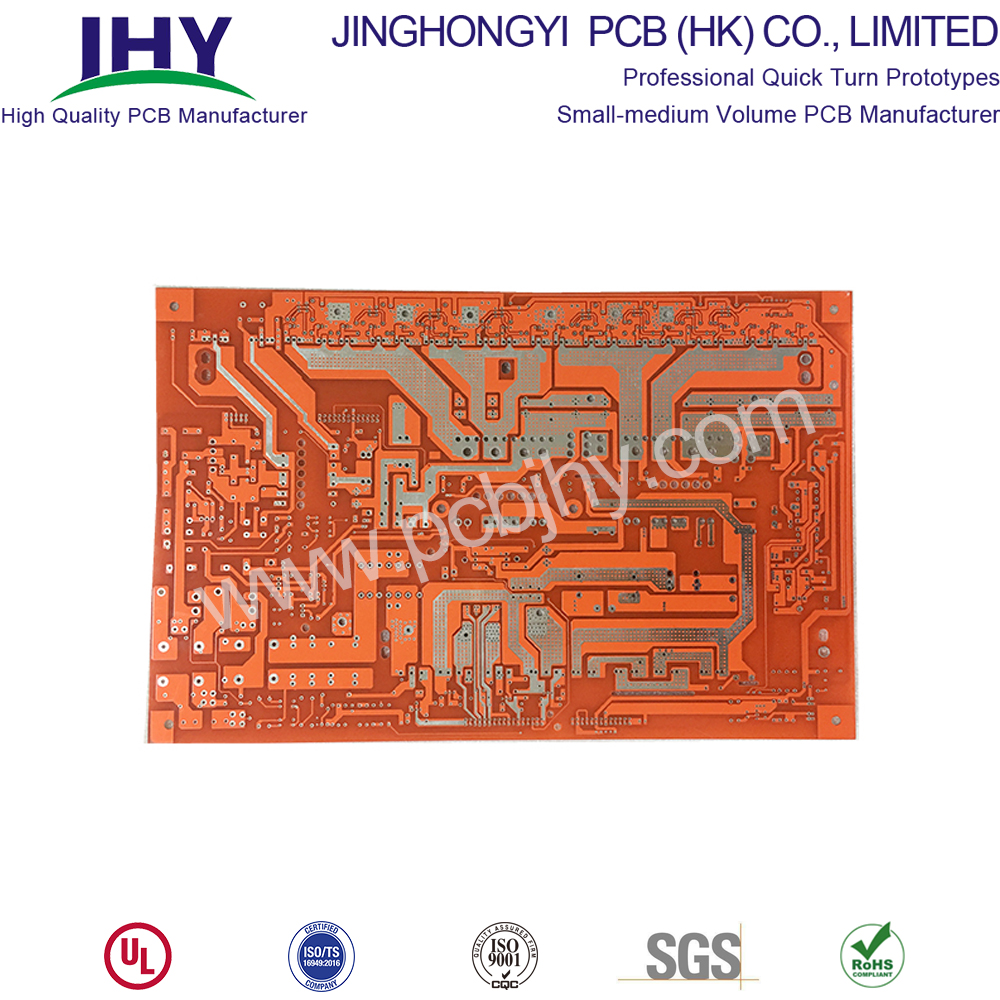
Videos for 4 layer PCB design and manufacturing
In the future, nighttime lighting may have significant savings in electricity consumption, because we can hand over the task of lighting to illuminating plants that have been carefully designed by synthetic biologists. Recently, American scientists transplanted luciferase from fireflies to a plant called Arabidopsis thaliana to produce radiant Arabidopsis seeds. Not only that, but the illuminating animals such as luminescent fish and luminescent sheep have been successfully cultivated by scientists.
In this regard, Professor Zhao Guoping, an academician of the Chinese Academy of Sciences and a researcher in synthetic biology, said in an interview that it is not difficult to make bioluminescence. The difficulty lies in the genetic circuit design behind this, that is, how to make these organisms according to the designer's wishes. When the light is shining, it is not necessary to "rest" and accumulate energy.
Sending lovers glowing roses
Not a dream
Recently, in San Francisco, USA, Dr. Omri Emino Zhuo Rui of Synthetic Biology, Dr. Kyle Taylor of Botany, and technology entrepreneur Anthony Evans are working together to develop the "Glowing Plants" project. On their website, they said they wanted to provide more natural and energy-efficient lighting, and one day let everyone say goodbye to the light bulb. Using synthetic biotechnology to transfer a luciferase gene from fireflies to plants, improved genetic design and expression control, it is now possible to make a plant called Arabidopsis more than other previous scientific research. Bright fluorescence. In the future, they hope to develop sustainable lighting plants for street lighting and apply the technology to areas such as flower gardening.
Currently, the team has cultivated seeds of radiant Arabidopsis. Next, scientists have the potential to transplant this DNA to other plants. Scientists are full of confidence, and the next step is to make the rose shine, making this technology more commercially valuable.
Genetic miracle
Sheep that can shine in the dark
The gene transfer technology that makes plants glow is not particularly novel. Taiwanese scientists have successfully implanted luminescent gold nanoparticles called "bio-LEDs" into an aquatic plant, allowing aquatic plants to emit light. Researchers at New York University have developed similar luminescent plants. However, in an interview with the media, Omri Emino Zhuo Rui and Kyle Taylor said that based on previous research, their design is more complete and they can be brighter with better genetic sequencing.
In this regard, Professor Zhao Guoping said: "First of all, this technology is not difficult. It is worthy of recognition that letting plants shine and illuminate, this idea is very fun. Compared to other plants, Arabidopsis is already known to biologists. A relatively clear plant is also relatively simple to control by hand. The luciferin from fireflies is a kind of luminescent protein, which requires it to consume energy and transplant it into plants. The photosynthesis of plants can produce fluorescein bright. The energy of the rise." The researchers also said that photosynthesis in Arabidopsis gives foreign luciferin protein "power fuel", but does not make plants heat like a light bulb.
Coincidentally, the media has recently reported extensively on the news that scientists in Uruguay have created sheep that will shine. Scientists in Uruguay have pointed out that perhaps in the future we will be able to obtain fluorescent wool textiles. Zhao Guoping pointed out that unlike the luminescent Arabidopsis thaliana, the luminescent protein grafted from the luminescent sheep is from the jellyfish. Luminescent proteins from jellyfish require sunlight or ultraviolet light to illuminate. The luciferin protein from fireflies does not require the sun and can glow at night. By contrast, it is easier to lead plants transplanted with luciferase toward the application of street lamps. “Compared to some basic scientific explorations, the public prefers to ask what the scientific research results are, but perhaps the fun itself makes sense. The shiny wool may be added to the stars’ costumes in the future stage, in the spotlight. Beautiful effect. Let the pet fish in our fish tank shine, maybe make the players who like fish culture more happy." Zhao Guoping smiled.
Luminescent creature
Install a control switch
Professor Zhao pointed out that it is not difficult to let the bioluminescence that would not shine, it is difficult to let the creature shine according to the will of the researcher. If we make achievements in this area, it is the new development of synthetic biology technology that really has "gold content".
"In theory, people can shine. But will you agree to make you or your child shine? Except for technical problems, there are ethical issues behind it. If these doctors in the United States can The genetic line design has a controllable switch for the plant to emit light. For example, it can not emit light during the day. After the night comes, the darker the brightness, the harder it is, but it is really practical. Meaning. Design genetic lines with different genetic components, let the genetic elements be expressed in plants according to our wishes, not express when there is light outside, "rest", accumulate energy through photosynthesis, and dark in the outside world It is expressed at the time, and it is the "gold-containing" high-quality, practical synthetic biology research."
Because of the genetic differences in plants themselves and the differences in the level of genetic manipulation of different plants, it is much more difficult to make roses shine than in Arabidopsis. "There are a lot of French phoenix trees on the streets of Shanghai. I want them to replace the traditional street lamps one day to illuminate pedestrians. I am afraid it will be more difficult, but it is not impossible." Professor Zhao said.
Will new technology cause
Gene contamination?
Several scientists invited professors at Harvard University's biosafety to explain to everyone. They admit: "The pollen transmission caused by insects and birds does cause the risk of infection with other close relatives." But they said that these problems were carefully considered during the research process. "The reason why they choose to be south Mustard is because it is a plant that pollinates itself, nor is it a native plant of the United States. There is no "relative" in the wilderness of the United States."
In this regard, Professor Zhao Guoping believes that there are actually many solutions. For example, there are many plants in nature, which are propagated through asexual processes, allowing these plants to shine. It also allows the glowing plants to not bloom at all, and can completely avoid the problem of pollen transmission.
The explanation of several scientists is that Arabidopsis, which is currently designed, basically uses all the extra energy to illuminate, and is much weaker in evolutionary ability than other common plants.
Professor Zhao Guoping said: "In the research of synthetic biology, every progress is extremely difficult. I am afraid that it is impossible to achieve the exaggerated horror in science fiction films. In addition, most responsible scientists are good people. If there is any harm, The scientists who are the first to suffer are the safety of themselves. The safety issue is strictly controlled from a professional perspective."